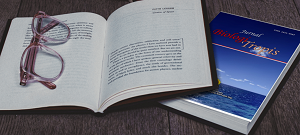Effectiveness of Biolarvicide Extract and Granule Formulation of Cocok Bubu Leaves Against Aedes aegypti
Authors
Mila Nurmala Hayati , Lela Lailatul Khumaisah , Devi Indah AnwarDOI:
10.29303/jbt.v25i3.9843Published:
2025-08-12Issue:
Vol. 25 No. 3 (2025): Juli-SeptemberKeywords:
aedes aegypti, biolarvicide granules; cocok bubu; dengue hemorrhagic fever (DHF); Elatostema rostratum.Articles
Downloads
How to Cite
Downloads
Metrics
Abstract
Dengue Hemorrhagic Fever (DHF), transmitted by Aedes aegypti, remains a major public health concern. This study aims to evaluate the effectiveness of biolarvicides from methanol and acetone extracts of cocok bubu (Elatostema rostratum) leaves and their granule formulations. Extracts and granules were tested at concentrations of 50, 100, 200, and 400 ppm. Granule preparations met standard criteria, including organoleptic properties, active compound content, and dispersion time. The analysis included LC₅₀ and LT₅₀ determination for both extract types. The acetone extract showed greater larvicidal activity (LC₅₀ = 85.67 ppm; LT₅₀ = 51.1 hours) than the methanol extract (LC₅₀ = 112.854 ppm; LT₅₀ = 51.8 hours), both falling into the moderate-to-high toxicity category. Similarly, the granule formulations showed that acetone-based granules (LC₅₀ = 496.941 ppm; LT₅₀ = 51.1 hours) were more effective than methanol-based granules (LC₅₀ = 528.774 ppm; LT₅₀ = 57.3 hours), with moderate-to-low toxicity. These findings indicate that cocok bubu leaf extracts, particularly acetone-based, have potential as effective plant-derived larvicides. Further development of plant-based larvicides may offer safer alternatives to synthetic larvicides in vector control programs.
References
[BPOM] Badan Pengurus Obat & Makanan. (2014). Persyaratan Mutu Obat Tradisional.
[DINKES] Dinas Kesehatan. (2023). Profil Kesehatan Kota Sukabumi.
[FI] Farmakope Indonesia edisi VI. 2020.
[MENKES RI] Menteri Kesehatan RI. (2020). Pedoman Nasional Pelayanan Kedokteran Tata Laksana Infeksi Dengue pada Dewasa.
[WHO] World Helth Organization (2024). Degue and Severe Dengue. https://www.who.int/news-room/fact-sheets/detail/dengue-and-severe-dengue.
Afniarty, F. (2022). Uji Aktivitas Anti-inflamasi Ekstrak Daun Cocok Bubu (Elatostema rostratum (Blume) Hassk) terhadap Mencit Putih Jantan. [Skripsi]. Universitas Muhammadiyah Sukabumi.
Armadany, F., I., Dian, M., S., Ari, P., U., & Andi, N., T., A. (2022). Uji Aktivitas Sediaan Granul dari Ekstrak Etanol Daun Komba-Komba (Chromolaena odorata L) sebagai Larvasida. Jurnal Borneo. 2(2): 59–70 ISSN: 2809–3259. https://doi.org/10.57174/jborn.v2i2.45
Assaf, K., H., Nafandy, A., Allam, A., Hamed, A., & Kamed, M. (2020). Phytochemistry and Biological Activity of Family “Urticaceae”: a review (1957 – 2019). Journal of Advanced Biomedical and Pharmaceutical Sciences. 3. http://dx.doi.org/10.21608/jabps.2020.24043.1073
Astuti, D., L., & Maesaroh., I. (2020). Formula dan Uji Evaluasi Sediaan Granul Ekstrak Serai (Cymbopongo citratus) sebagai Efek Biolarvasida Nyamuk Aedes aegypti. JFARMAKU. 5(2): 45-50. http://dx.doi.org/10.55093/jurnalfarmaku.v5i2.137
Awaliah, L. (2020). Skrining Fitokimia dan Uji Aktivitas Antibakteri Ekstrak Daun Cocok Bubu (Elatostema rostratum (Blume) Hassk). Skripsi. Universitas Muhammadiyah Sukabumi. https://eprints.ummi.ac.id/1862/
Ayuningtias R. (2020). Uji Aktivitas Biolarvasida Ekstrak Daun Cocok Bubu (Elatostema rostatum (Blume) Hassk) terhadap Larva Aedes aegypti. Skripsi. Universitas Muhammadiyah Sukabumi. https://eprints.ummi.ac.id/1862/
Berlian, V., A., & Anas, S. (2018). Review Mekanisme, Karakterisasi dan Aplikasi Sodium Starch Glycolate (SSG) dalam Bidang Farmasetik. Farmaka. 16(2). https://doi.org/10.24198/jf.v16i2.17612
Fitrianingsih, F. (2019). Survey Jentik Nyamuk dan Pemberian Bubuk Abate Di Bak Mandi Warga RT 03 Rw 03 Desa Mrican Kecamatan Sragi Kabupaten Pekalongan. Jurnal Bio Educatio. 4(1): 33–40. https://doi.org/10.31949/be.v4i1.1412
Fitriyani, R. (2021). Pemanfaatan Ekstrak Daun Cocok Bubu (Elatostema rostratum (Blume) Hassk) sebagai Bioinsektisida terhadap Hama Ulat Kubis (Plutella xylostella L.) dan Hama Ulat Grayak (Spodoptera litura F.). [Skripsi]. Universitas Muhammadiyah Sukabumi. https://eprints.ummi.ac.id/view/creators/Fitriyani=3ARini=3A=3A.default.html
Grigoraki, L., Vassileia, B., christos, M., Antonis, M., Hilary, R., Luc, S., & John, V. (2019). Functional and immunohistochemical characterization of CCEae3a, a carboxylesterase associated with temephos resistance in the major arbovirus vectors Aedes aegypti and Ae. Albopictus. Elsevier. 74: 61–67. https://doi.org/10.1016/j.ibmb.2016.05.007.
Heliawati, (2018). Kimia Organik Bahan Alam. Universitas Pakuan.
Hernes, FP., Lutfi, S., & Luh, P., W. (2018). Pengaruh Perbandingan Bahan Dengan Pelarut Aseton Terhadap Total Fenolik, Warna dan Klorofil Ekstrak Sargassum polycystum. Jurnal Rekayasa dan Manajemen Agroindustri. 6(2). ISSN: 2503–488X.
Khumaisah, L., L., Ayuningtias, R., Muharam, S., Mulyani, R., Awaliah, L. (2023). Antibacterial Activity Against Gram-Positive and Gram-Negative Bacteria and Biolarvicide to Aedes aegypti from Cocok Bubu (Elatostema rostratum (Blume) Hassk) Leaves Extract. Jurnal Riset Kimia. 2476 – 8960. https://doi.org/10.25077/jrk.v14i2.613.
Nurlitasari, R. (2020). Efektivitas Sediaan Granul Ekstrak Daun Canar Bokor (Smilax leucophyla Blume) terhadap Aedes aegypti. Skripsi. Universitas Muhammadiyah Sukabumi. https://eprints.ummi.ac.id/1894/.
Pratama, R., Tresna, L., & Firman, G. (2021). Uji Aktivitas Larvasida Sediaan Granul Ekstrak Daun Lidah Buaya (Aloe vera (L.) Burm. f.) terhadap Larva Nyamuk Aedes aegyptii. Journal of Pharmacopolium. 1(1). https://repository.universitas-bth.ac.id/id/eprint/1724.
Rochmat, A., Napitasari, M., & Karina, M., A. (20170. Efikasi Granul Biolarvasida Nyamuk Aedes aegypti dari Ekstrak Etil Asetat Daun Beluntas. Jurnal Penelitian Saintek. 22(1). https://doi.org/10.21831/jps.v22i1.13896.
Samejo, M., Q., Memon, S., Bhanger, M., I., & Khan, K., M. (2013). Isolation and characterization of steroids from Calligonum polygonoides., J. Pharmacy Res. (6). DOI: 10.1016/j.jopr.2013.03.017
Sobari, E., M., Gilang, R., & Irna, D. (2022). Menentukan Nilai Rendemen Pada Proses Ekstraksi Daun Murbei (Morus Alba L.) Dengan Pelarut Berbeda. 4(2) 28 – 35. Jurnal Ilmiah Ilmu dan Teknologi Rekayasa. DOI: 10.31962/jiitr.vvii.66
Suryani, C., N., Dewa, G., M., P., & Anom, J. (2016). Pengaruh Jenis Pelarut terhadap Kandungan Total Flavonoid dan Aktivitas Antioksidan Ekstrak Daun Matoa (Pometia pinnata). Udayana.
Wuillda, A., C., J., D., S., Roberto, C., C., M., & Fernanda, D., N., C. (2019). Larvicidal Activity of Secondary Plant Metabolites in Aedes aegypti Control: An Overview of the Previous 6 Years. Journal Sagepub.com. 1–11. DOI: 10.1177/1934578X19862893.
Yuliani, H., & Maya, I., R. (2019). Efek Perbedaan Pelarut terhadap Uji Toksisitas Ekstrak Pineung Nyen Teusale. JFII. 6(2): 347–352. https://doi.org/10.33096/jffi.v6i2.453
License
Copyright (c) 2025 Mila Nurmala Hayati, Lela Lailatul Khumaisah, Devi Indah Anwar

This work is licensed under a Creative Commons Attribution 4.0 International License.

Jurnal Biologi Tropis is licensed under a Creative Commons Attribution 4.0 International License.
The copyright of the received article shall be assigned to the author as the owner of the paper. The intended copyright includes the right to publish the article in various forms (including reprints). The journal maintains the publishing rights to the published articles.
Authors are permitted to disseminate published articles by sharing the link/DOI of the article at the journal. Authors are allowed to use their articles for any legal purposes deemed necessary without written permission from the journal with an acknowledgment of initial publication to this journal.


























